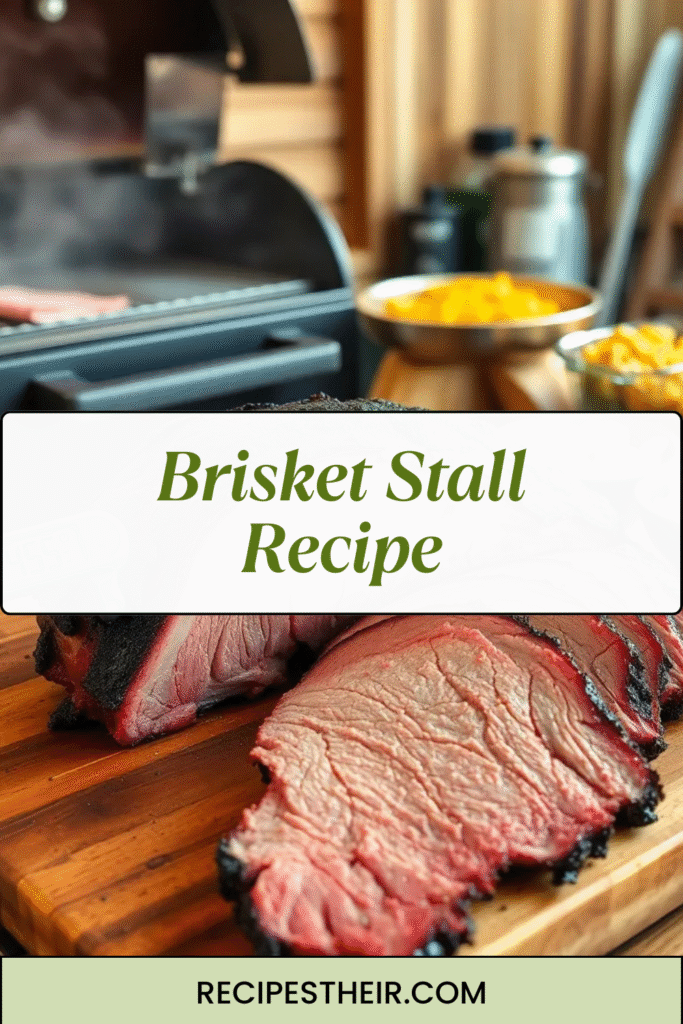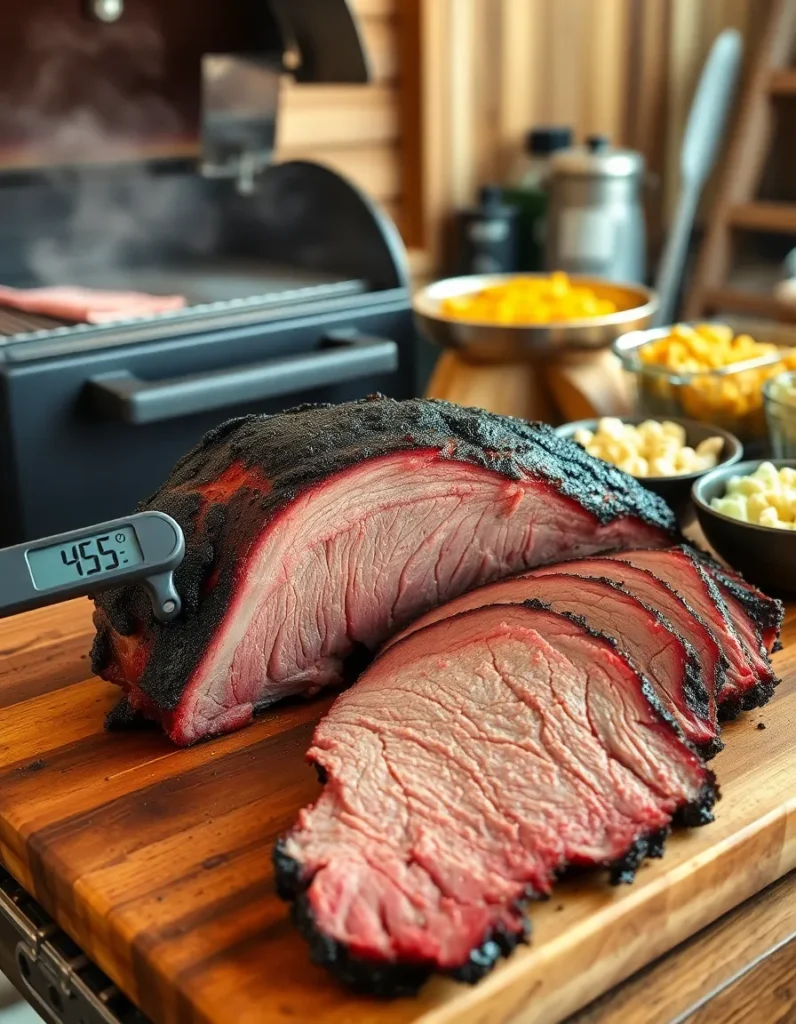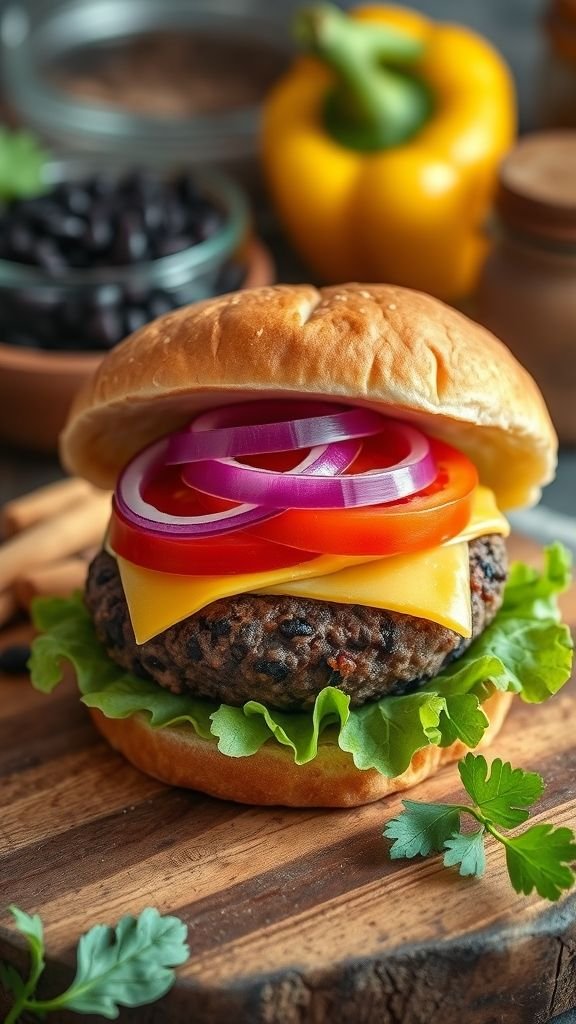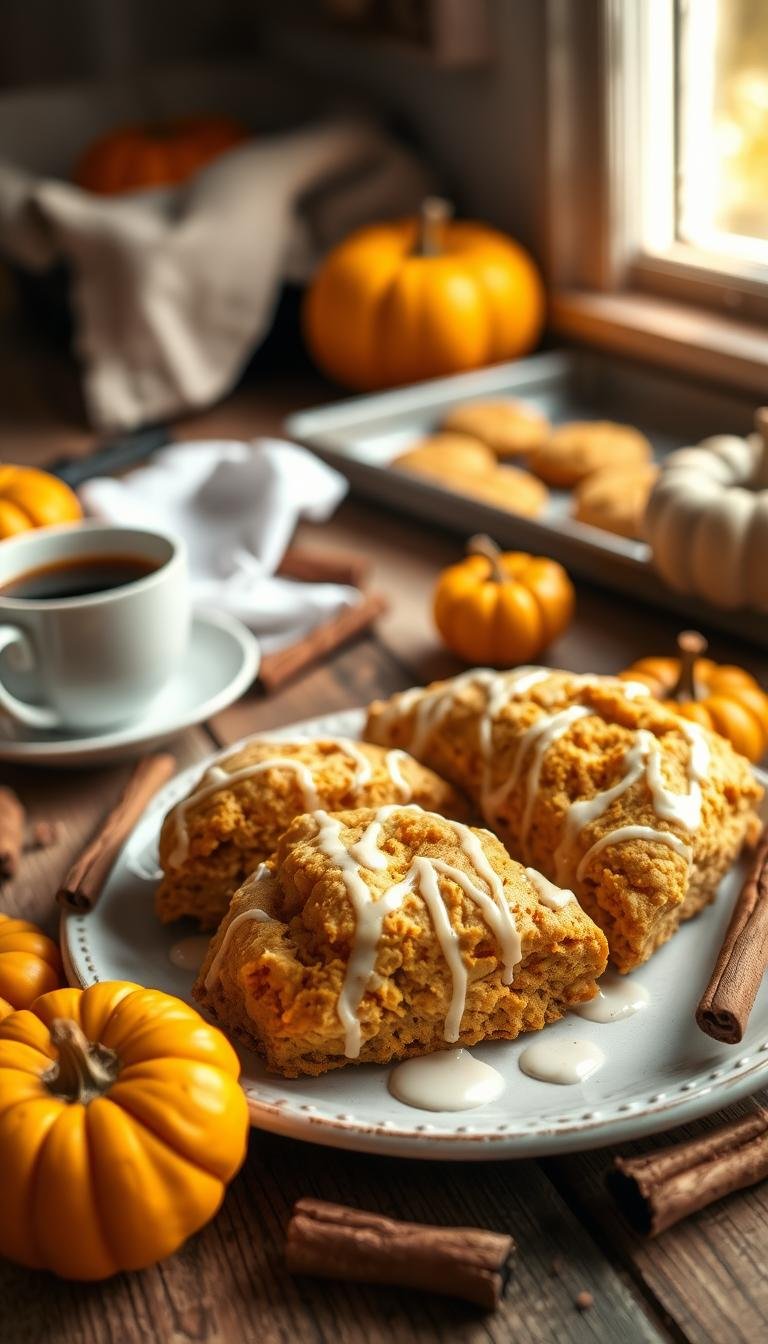Brisket Stall: What It Is and How to Beat It (With Recipe & Pro Tips)
If you’ve ever smoked a brisket low and slow, you’ve probably encountered the dreaded brisket stall. That frustrating moment when your meat’s internal temperature just… stops rising. Don’t worry—you’re not alone, and it’s not a mistake. It’s a natural part of the process. In this guide, we’ll break down exactly what the brisket stall is, why it happens, and how to get through it without losing your mind (or your juicy brisket). Plus, we’ve included a tried-and-true smoked brisket recipe to help you master it.

🔥 What Is the Brisket Stall?
The brisket stall, also known as the “barbecue stall,” is a period during the smoking or cooking process where the internal temperature of the meat stops increasing—often for hours. It usually happens between 150°F to 170°F, depending on your smoker, humidity, and meat size.
You might be wondering, “Why is my meat not cooking?” But here’s the deal:
The Science Behind the Brisket Stall
The stall is caused by a process called evaporative cooling. As the brisket cooks, moisture inside the meat begins to evaporate and cools the surface, much like sweat cools your body. This slows the temperature increase, essentially stalling it.
🕒 How Long Does the Brisket Stall Last?

It varies, but expect the stall to last 1 to 4 hours. Factors like smoker temperature, meat size, airflow, and humidity all play a role. Larger briskets can even stall multiple times during the cook.
🛠️ 5 Smart Ways to Beat the Brisket Stall
- Wrap the Brisket (Texas Crutch Method)
Wrap your brisket in butcher paper or aluminum foil around 160°F. This traps moisture and heat, helping push through the stall faster. - Raise the Smoker Temperature Slightly
Try increasing your smoker from 225°F to 250°F or 275°F. It may help move things along without drying out the brisket. - Be Patient (Low & Slow Wins)
Some pitmasters don’t wrap at all. If you want deep bark and are in no rush, just ride it out. The stall will eventually pass. - Use a Water Pan for Moisture Control
Placing a pan of water inside the smoker adds humidity, reducing evaporative cooling. - Keep the Lid Closed
Every time you open the smoker, you let out heat. Resist the urge to peek. Let the smoke do the work.
🍖 Smoked Brisket Recipe That Conquers the Stall
Ready to put theory into practice? Here’s a foolproof smoked brisket recipe designed to navigate the stall like a pitmaster.
Ingredients:
- 1 whole packer brisket (10–14 lbs), trimmed
- ¼ cup kosher salt
- ¼ cup coarse black pepper
- 2 tbsp garlic powder (optional)
- 2 tbsp onion powder (optional)
- Yellow mustard (as a binder)
Step-by-Step Instructions:
1. Trim the Brisket
Start with a cold brisket for easier trimming. Remove any hard fat, leaving about ¼-inch fat cap. Square off the edges for even cooking.
2. Season the Meat
Rub a light coat of mustard over the brisket. Mix salt, pepper, and optional garlic/onion powders, and coat evenly. Let it rest while the smoker preheats.
3. Preheat Your Smoker
Set your smoker to 225°F. Use oak, hickory, or mesquite for classic brisket flavor. Add a water pan to keep the chamber humid.
4. Place Brisket in Smoker
Position the brisket fat-side up or down depending on your smoker heat source. Insert a temperature probe in the thickest part of the flat.
5. Smoke Until the Stall (~160°F)
This is when the brisket stall begins. The temp will climb to about 150–165°F and may hold there for hours.
6. Wrap the Brisket (Optional)
If you choose the Texas Crutch, wrap it tightly in butcher paper or foil around 160°F. Return it to the smoker immediately.
7. Continue Cooking to 203°F
Smoke until the brisket reaches an internal temp of 203°F and feels probe-tender like soft butter.
8. Rest the Brisket
Rest it in a cooler wrapped in a towel for at least 1–2 hours. This allows the juices to redistribute and enhances tenderness.
9. Slice Against the Grain
Separate the point from the flat and slice against the grain for maximum tenderness. Serve with your favorite barbecue sides.
⏱ Estimated Cooking Timeline (12–14 lb brisket at 225°F)
| Time | Process |
|---|---|
| 0–6 hrs | Smoke to stall (internal temp 160°F) |
| 6–10 hrs | Through the stall and up to 203°F |
| 10–12 hrs | Resting time |
| Total Time | ~12–14 hours |
🔥 Note: Every brisket is different. Let internal temp and texture—not time—be your guide.
👨🍳 Pro Tips to Master the Brisket Stall
- Use a Good Thermometer: A digital probe is essential. Trust temperature over guesswork.
- Don’t Panic: The brisket stall is normal. It doesn’t mean your smoker’s broken.
- Watch the Bark: Don’t wrap too early. Let a good crust (bark) form before you wrap.
- Let It Rest: This might be the most important step. Resting helps retain moisture.
- Practice Patience: Great brisket takes time—and the stall is part of the journey.
🍽️ Best Sides to Serve with Brisket
- Smoked Mac & Cheese
- Coleslaw
- Cornbread
- Pickles and Onions
- Texas-style Pinto Beans
These sides complement the rich, smoky brisket and make for a memorable meal.
🧠 Final Thoughts on the Brisket Stall
The brisket stall can be frustrating, especially if you’re new to smoking meat. But understanding what causes it and how to work with (or around) it gives you confidence and control. Whether you wrap it or ride it out, the key is consistency and patience. Remember, even professional pitmasters deal with the stall—it’s not a failure; it’s part of the flavor-building process.
So fire up that smoker, embrace the stall, and enjoy the reward of fall-apart tender brisket at the end.
🔎 FAQs About the Brisket Stall
How do I know my brisket is in the stall?
When your internal temperature hits 150°F–170°F and doesn’t rise for over an hour, you’re likely in the stall.
Should I always wrap my brisket?
Not necessarily. Wrapping (Texas Crutch) helps beat the stall and reduces cooking time, but unwrapped brisket has a thicker bark and stronger smoke flavor.
Can I avoid the stall completely?
You can shorten it by wrapping and cooking hotter (e.g., 275°F), but avoiding it entirely usually sacrifices flavor or bark texture.





